Damien Broderick, April 22, 1944 – April 19, 2025
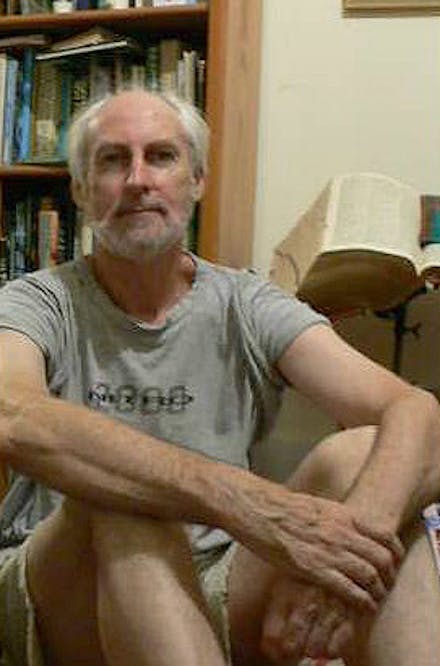
Australian writer, editor, and critic Damien Broderick has died, April 19, 2025, just a few days short of his 81st birthday. He died peacefully in his sleep after a long illness. He is survived by his wife and occasional collaborator Barbara Lamar.
I had known Damien quite well online for decades, including interactions in newsgroups and on mailing lists as well as personal correspondence. We met only once, at the World Fantasy Convention in 2017, in San Antonio, TX, where Damien lived at that time; and we had a nice if brief conversation. Damien was showing signs of physical frailty at the time but was still mentally sharp. I had the honor of writing the foreword to his 2012 collection Adrift in the Noösphere, and to reprint a couple of his excellent short stories.
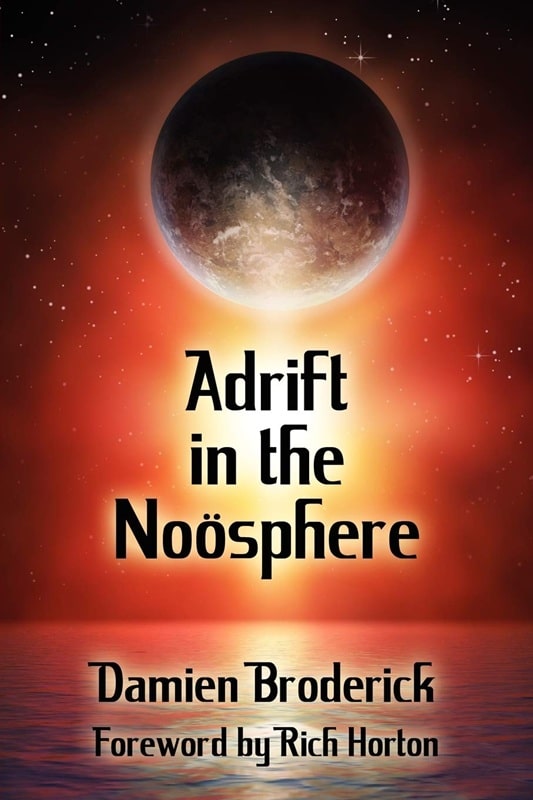 |
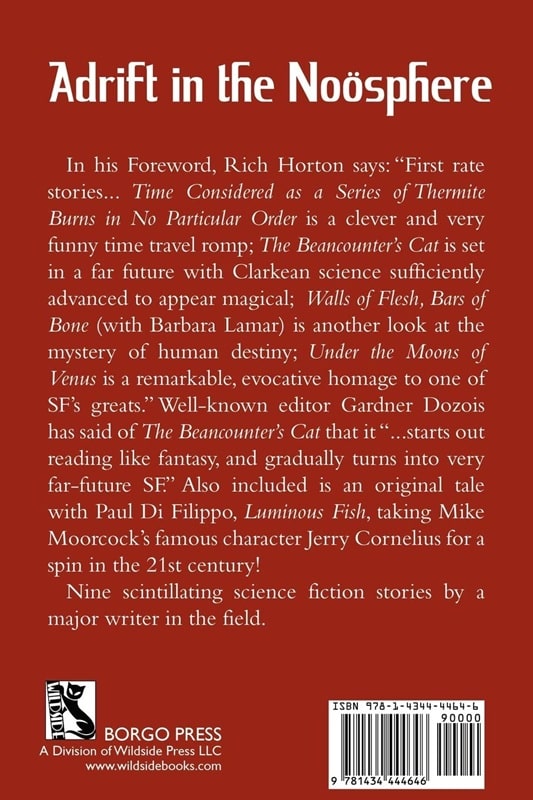 |
Adrift in the Noösphere (Borgo Press, April 2012)
Damien Broderick was born April 22, 1944, in Melbourne, Australia. He began publishing at the age of 20 with “The Sea’s Furthest End” in the first volume of John Carnell’s original anthology series New Writings in SF.
His first novel, Sorcerer’s World, appeared in 1970 but didn’t gain much notice. (Perhaps deservedly so – I found it less than successful myself and Damien once admitted to me that he regretted some fairly juvenile tricks he played in the novel – he extensively revised it in 1985 as The Black Grail.)
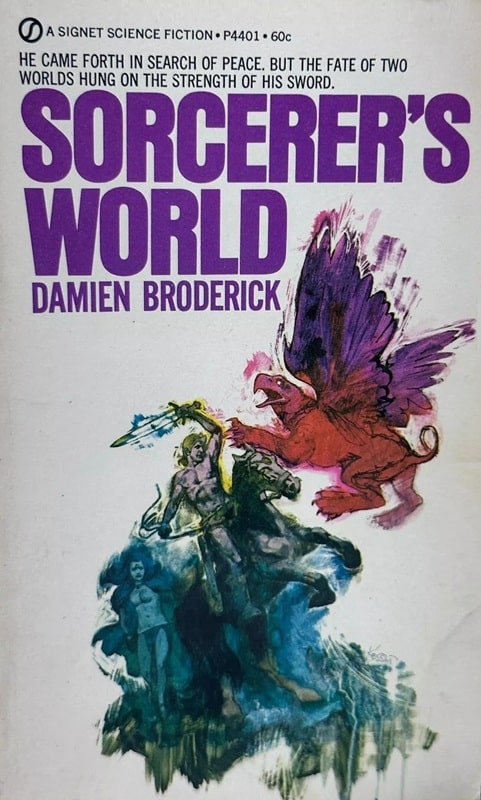 |
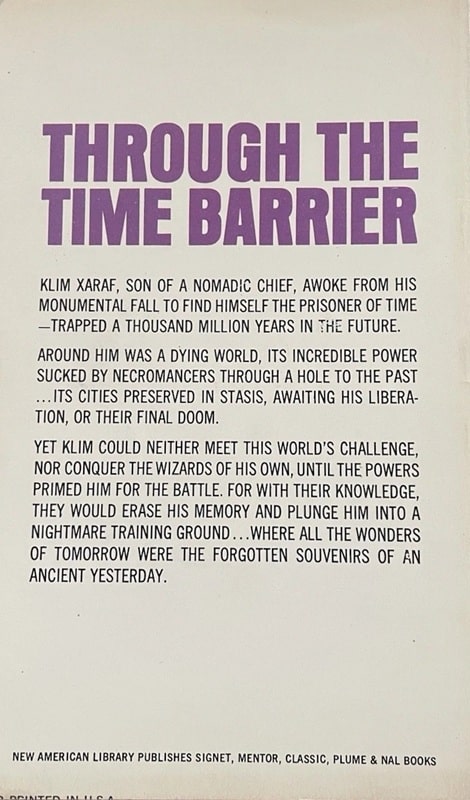 |
 |
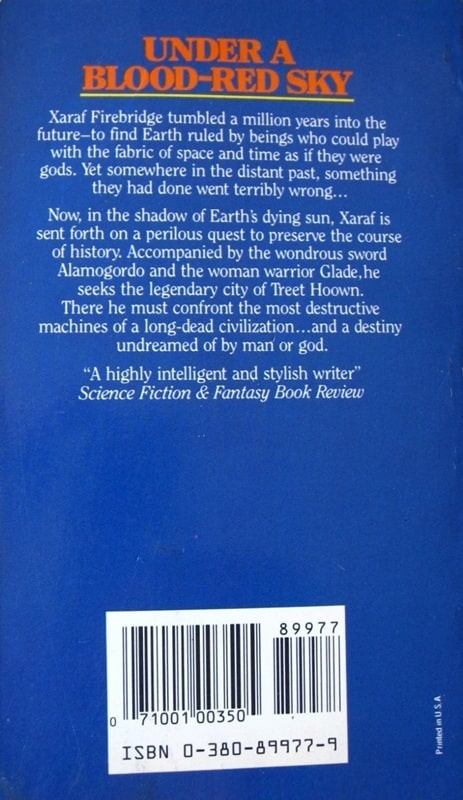 |
Sorcerer’s World (Signet, October 1970) and The Black Grail
(Avon, September 1986). Covers by Sanford Kossin and Luis Royo
Indeed, Broderick was fond of radically reworking and improving his stories – he revised his first story, “The Sea’s Furthest End,” twice; and also revised The Dreaming Dragons, which won a Ditmar on its first appearance in 1980, as The Dreaming in 2001.
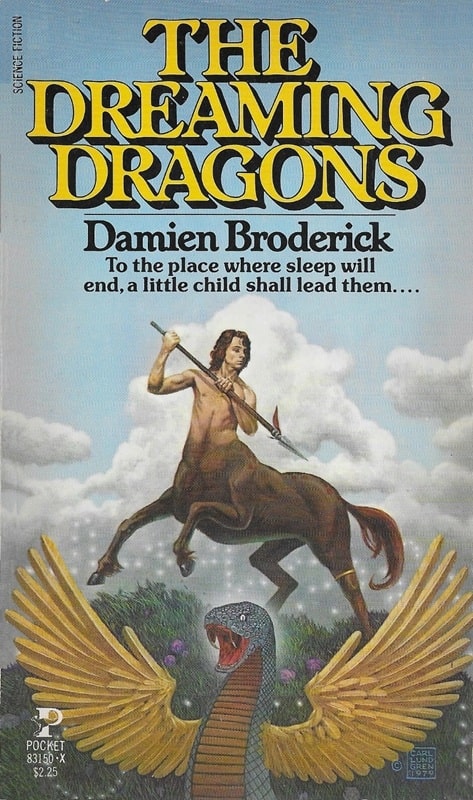 |
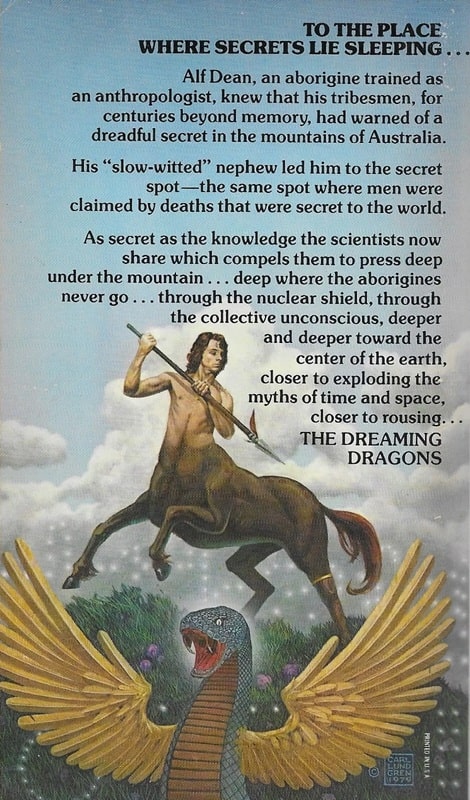 |
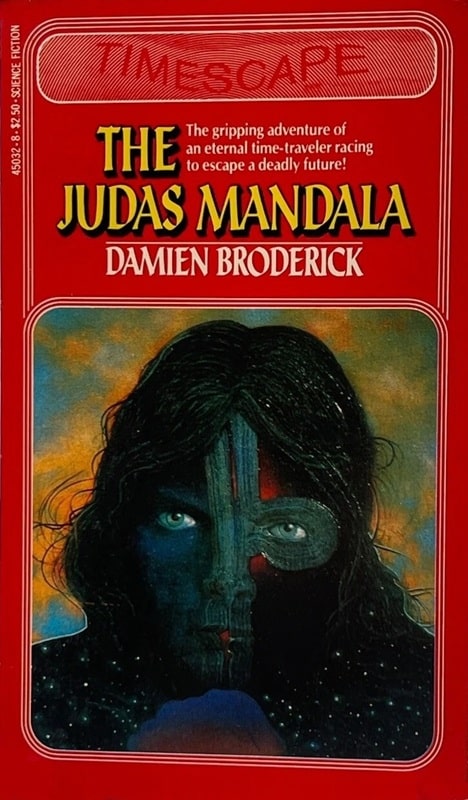 |
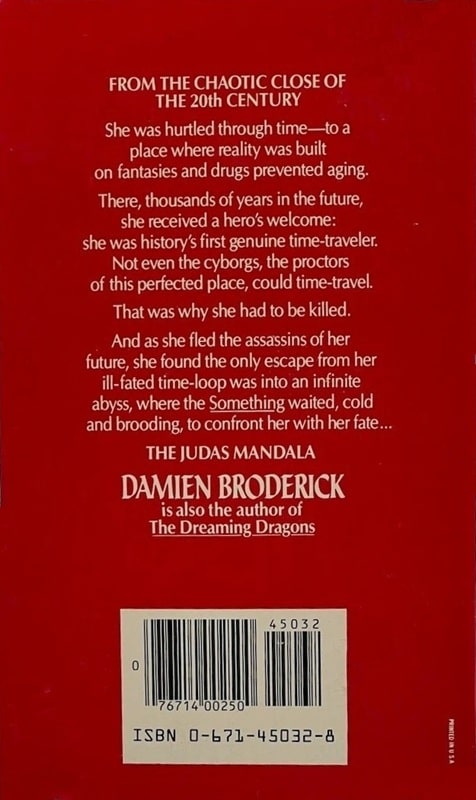 |
The Dreaming Dragons (Pocket Books, November 1980) and The Judas Mandala
(Timescape, October 1982). Covers by Carl Lundgren, uncredited
Broderick began to gain wider notice with The Dreaming Dragons, and subsequent novels including The Judas Mandala (1982), The White Abacus (1997), and the impressive diptych comprising Godplayers (2005) and K-Machines (2006) earned him much praise, and eventually four Ditmar awards and three Aurealis awards (the two most prominent Australian SF awards.) He was granted the A. Bertram Chandler Award for Outstanding Achievement in Australian Science Fiction in 2010.
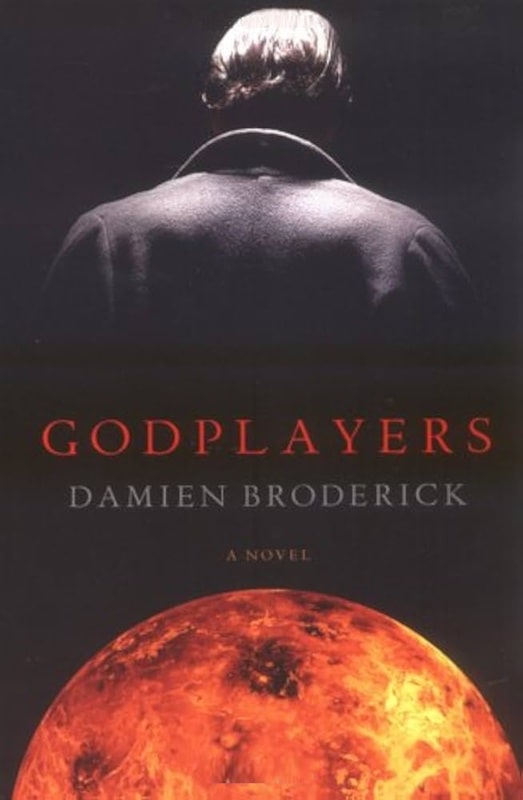 |
 |
Godplayers and K-Machines (Thunder’s Mouth Press,
May 2005 and March 2006). Covers by David Riedy
He also collaborated on a number of novels with Rory Barnes, not all of which were SF – I was impressed by a rather madcap contemporary crime novel called I’m Dying Here (2009) – and with Barbara Lamar he wrote Post Mortal Syndrome (2011). His final “collaborations” were two novels rather radically revising early works by the late John Brunner: Threshold of Eternity (2017) and Kingdom of the Worlds (2021).
Broderick was also a first-rate writer of short fiction. I was profoundly impressed by “The Ballad of Bowsprit Bear’s-Stead (1980) and “The Magi” (1982), and then by a sequence of remarkable work in the 21st century, with several of these stories pastiches of major earlier SF work. The best of this late flowering are “Under the Moons of Venus,” “This Wind Blowing, and This Tide,” “The Qualia Engine,” and “The Beancounter’s Cat”; and in my view Broderick’s late short fiction deserves a closer look.
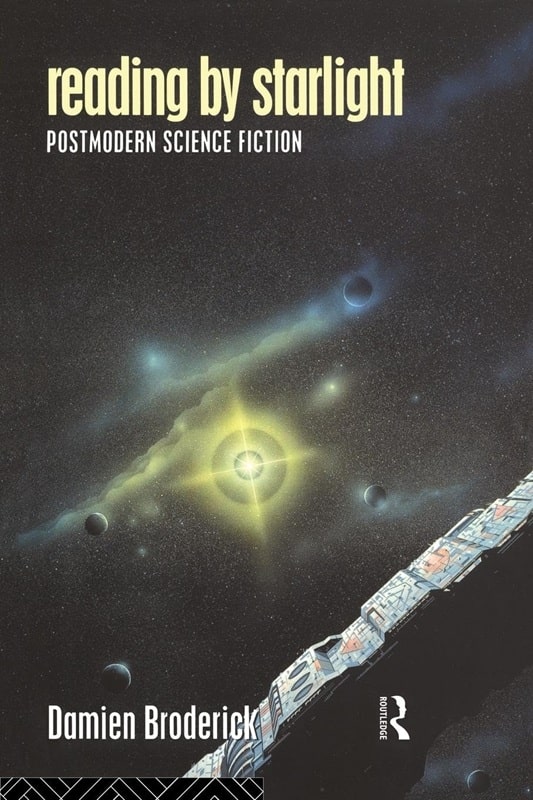 |
 |
Reading by Starlight: Postmodern Science Fiction (Routledge, 1995) and
X, Y, Z, T: Dimensions of Science Fiction (Borgo Press, January 2004).
Covers by Alan Craddock and Anders Sandberg
He has also written extensively in SF criticism, and in speculative science. Major critical works include Reading by Starlight: Postmodern Science Fiction (1995); Transrealist Fiction: Writing in the Slipstream of Science (2000); and X, Y, Z, T: Dimensions of Science Fiction (2004); as well as, with John Boston, a series of books detailing the history of John Carnell’s seminal UK magazines New Worlds and Science Fantasy issue by issue.
His science books include most notably The Lotto Effect: Towards a Technology of the Paranormal (1992); The Spike: Accelerating into the Unimaginable Future (1997); and Ferocious Minds: Polymathy and the new Enlightenment (2005).
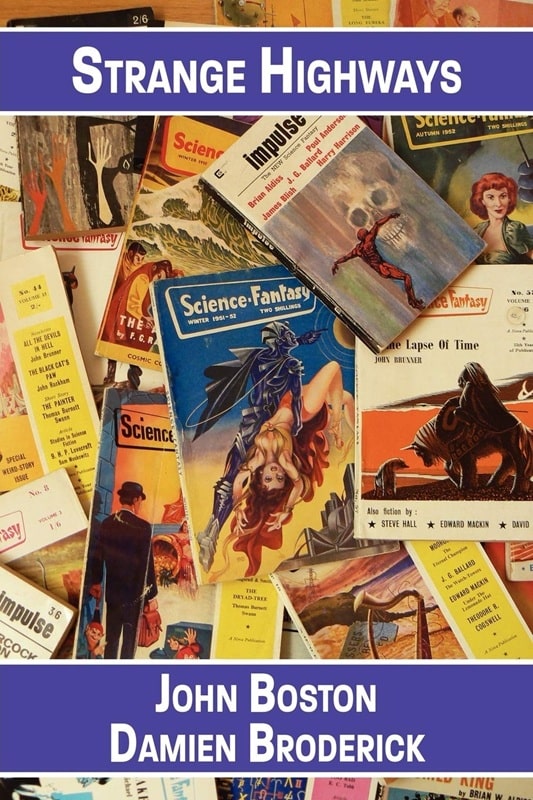 |
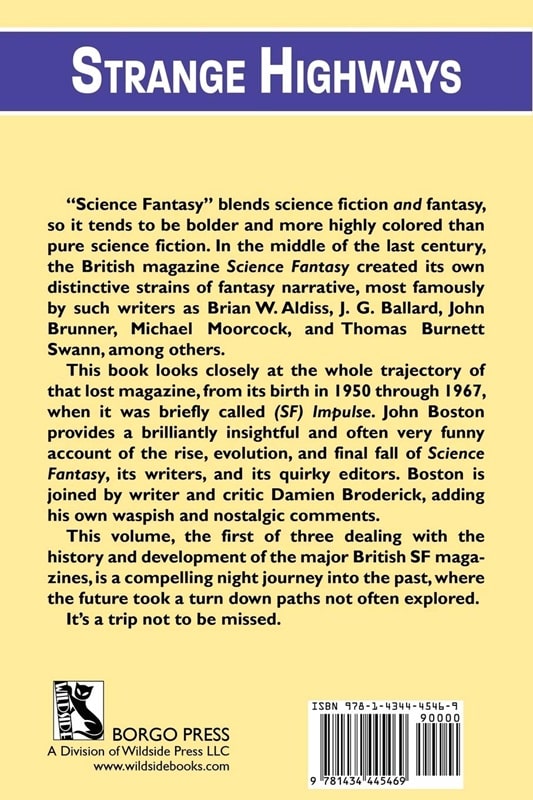 |
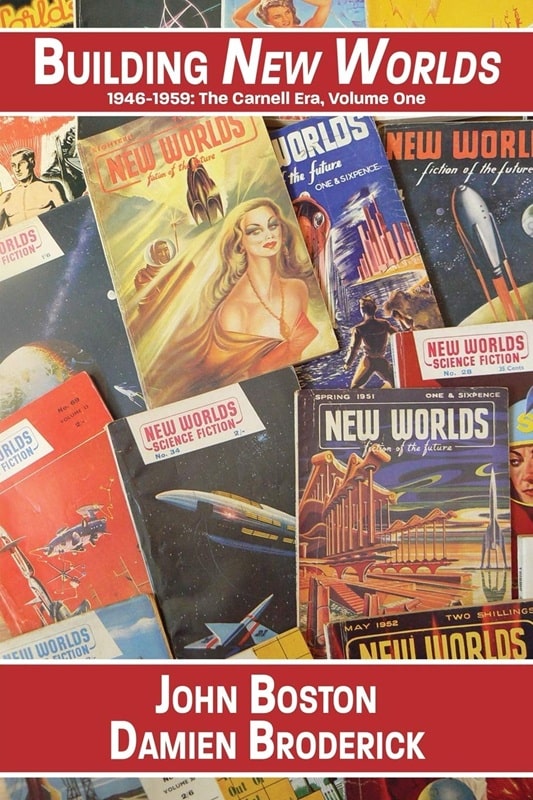 |
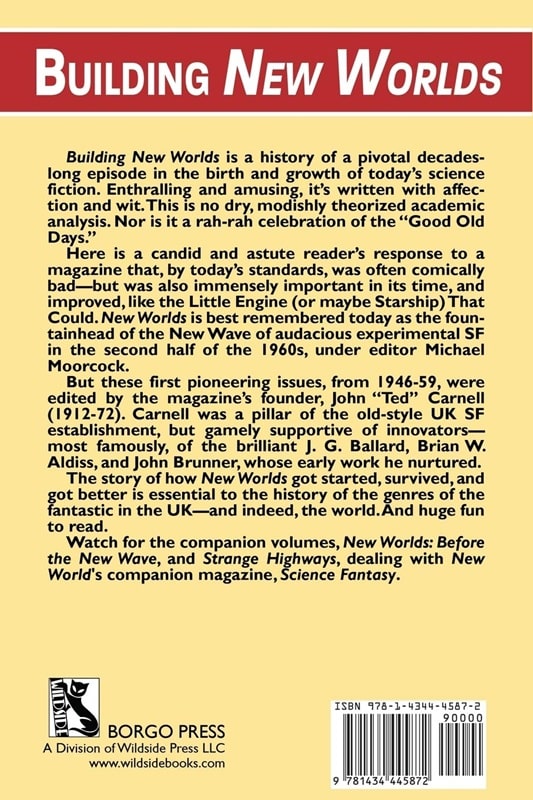 |
Strange Highways: Reading Science Fantasy, 1950-1967 and Building New Worlds,
1946-1959: The Carnell Era, Volume One (Borgo Press, January 3 and January 29, 2013)
He made contributions as fiction editor of the Australian science magazine Cosmos, and as a prolific anthologist. His anthologies include The Zeitgeist Machine (1977), Earth is But a Star (2001), and, with David Harwell, Centaurus: The Best of Australian Science Fiction (1999).
Damien Broderick was an outstanding science fiction writer – and, to my mind, a somewhat underappreciated one. He was a tireless advocate of Australian SF, in both his anthologies and his critical work. He was an intriguing and rather iconoclastic science writer, very interested in the far future and in very speculative scientific ideas, including paranormal powers. His scientific interests, not surprisingly, also inform his science fiction, much to its benefit (in the The Judas Mandala he seems to have coined the term “Virtual Reality.”)
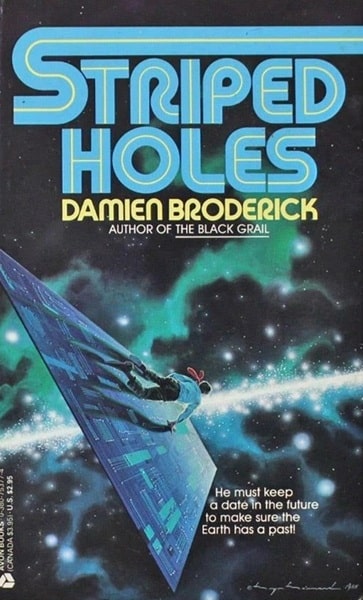 |
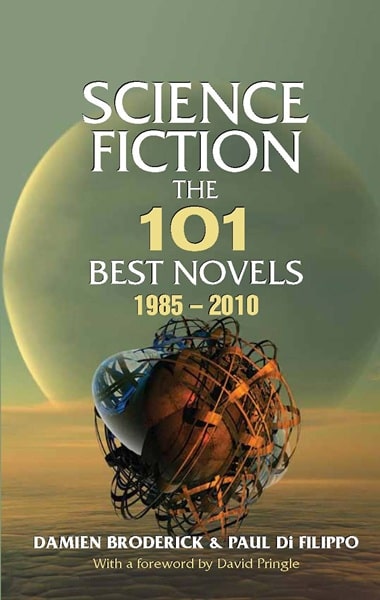 |
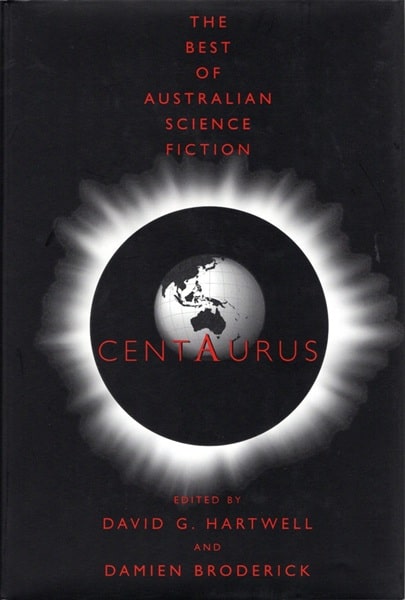 |
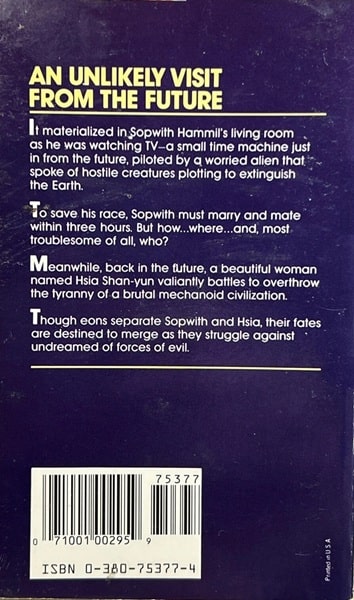 |
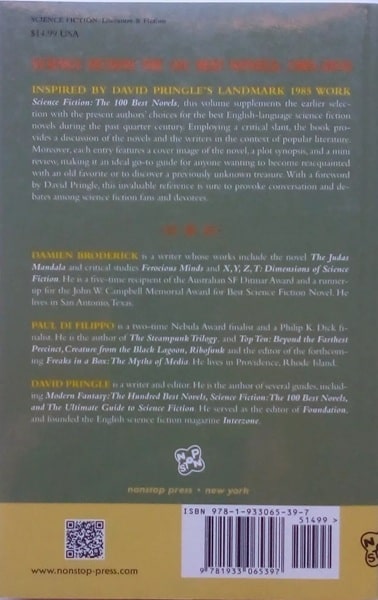 |
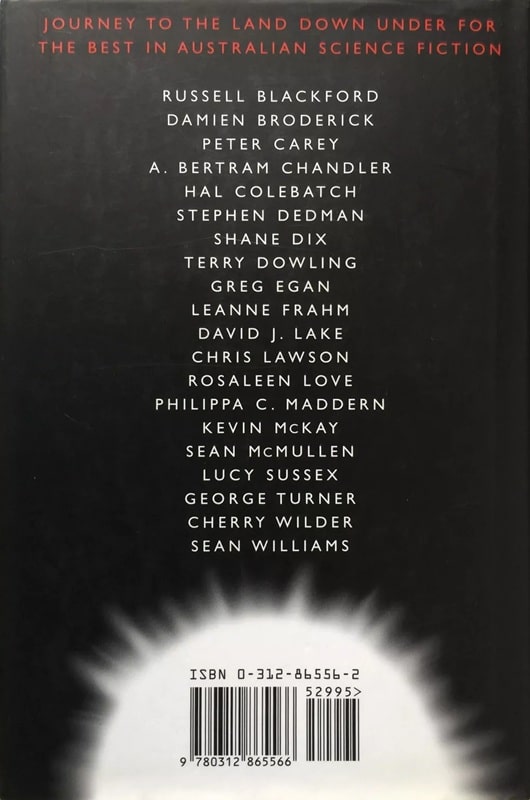 |
Striped Holes (Avon, November 1988), Science Fiction: The 101 Best Novels 1985-2010,
with Paul Di Filippo (Nonstop Press, 2012), and Centaurus: The Best of Australian Science Fiction,
with David G. Hartwell (Tor, July 1999). Covers by Bryn Barnard, Luis Ortiz, and Peter Lutjen
His range was broad – he wrote fantasy and crime fiction as well as SF, and his fiction could be very funny as well as very dark, sometimes at the same time. I was privileged to know him as well as I did, and I will miss him.
Rich Horton’s last article for us was a Retro-Review of the August 1961 issue of Fantastic magazine. His website is Strange at Ecbatan. Rich has written over 200 articles for Black Gate, see them all here.
Excellent. Thanks for writing this. I’ve forwarded the link to the mainstream media.
[…] MORE ABOUT DAMIEN BRODERICK. Rich Horton has written a tribute – “Damien Broderick, April 22, 1944 – April 19, 2025” – for Black […]
Being significantly junior in both chronological age and massive intellect (Mensa), I was ever in awe of my eldest male sibling. Though he ‘escaped parental control’ when I was 4, his influences were multivarious, but of primacy was his awakening of my 10 y.o. child-mind to the beauty, wonder, pathos and tragedy of Science Fiction.
Sharing his “strabismus” eye-defect and his name, I was baptised into far future/past by his work “A Man Returned”. Indeed, I was ‘blessed’ to be provided a pre-published copy of the seminal work later to become “The Dreaming Dragons”. This with the aim to test if it would be comprehensible to a pre-teen.
Voraciously gobbling up the greats such as Asimov, Clarke, Aldiss et cetera, I have thus far (in my late 60s) had a predilection for SF, though this has been tempered somewhat by the fantasy inter alia of Tolkien, CS Lewis, Feist. Science has always tantalised with works such as Madame Curie by her daughter
Interesting to note, Damien produced a school project in his early schooldays which received 11/10 for its “far fetched” imaginative but unlikely take on the potential of humankind creating a rocket to go into space. This was before the lunch of Soviet Sputnik in 1957!
This is a sad loss.
I met Damien in the mid-60s when we were both undergraduates at Monash University in Melbourne (he Literature, me physics).
We both shared an interest in science fiction and parapsychology at the time.
Damien’s primary interest was literature, especially science fiction while mine was and still is parapsychology.
I founded the short-lived ‘Monash University Society for Parapsychological Research’ which achieved some brief moment of distinction, being the longest named student society at the time. Now and then, Damien and I would discuss parapsychology before our paths diverged on graduation.
In 1990, Damien reached out to me for advice on the statistical analysis necessary for his upcoming book, The Lotto Effect.
On joining a discussion list focusing on parapsychology, I was delighted to see Damien was a member and I looked forward to one of his posts and re-establishing contact.
However, this is not to be. Maybe next time?
Richard